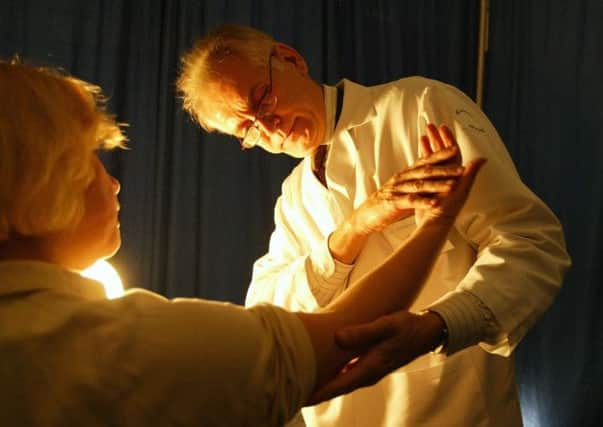Rise in UK inquiries for melanoma screening


Over the past 12 months there has been a 127 per cent rise in inquiries from people seeking out private dermatology treatment, part of a worldwide trend which has seen a 197 per cent increase over the same period.
The spike in calls, compiled by a private healthcare search engine, has been welcomed by Melanoma Action and Support Scotland, who said it was “encouraging” that people were taking precautionary measures.
Advertisement
Hide AdAdvertisement
Hide AdBut the charity said it wanted to see more one-stop clinics on the NHS in Scotland to identify cancerous moles earlier.
In Scotland, there has been an explosion in skin cancer rates in recent decades, with a rise of 273 per cent in melanoma and non-melanoma cases since 1990. More than 13,000 people are diagnosed with melanoma every year in Britain and around 2,200 people die from the disease, according to Cancer Research. The research by WhatClinic.com, which lists details of more than 100,000 clinics globally, shows that more and more people are turning to private health care to have potentially harmful moles checked out.
Going private to have a mole removed, the site says, costs an average of £205, and can raise an individual’s survival chances from 10 per cent to 90 per cent.
Emily Ross, director of WhatClinic.com, said: “Our global stats confirm that more people are researching the issue and taking action, with inquiries worldwide up 197 per cent in the past year.”
Unusual moles can be a sign of a malignant melanoma – the skin cancer most commonly caused by overexposure to ultraviolet light, particularly among those with fairer skin.
Warning signs are moles which change shape, grow, change colour – particularly if they darken – show blurred edges or if there is any bleeding.
Ms Ross added: “For those who want to monitor their skin there are a number of options available, from a straightforward mole check-up, all the way up to full body mole mapping – which takes photos of your body and allows comparison over time to highlight changes. Although often these services come at a cost, they can be very effective at ensuring early diagnosis and giving peace of mind.”
Moles identified with potentially abnormal or cancerous cells are removed via biopsies on the NHS. In Scotland, there is an 18-week waiting time target for referral to treatment dermatology guidelines.
Advertisement
Hide AdAdvertisement
Hide AdLeigh Smith, chair of Melanoma Action and Support Scotland, said: “We would like to see more one-stop clinics such as the one at Royal Alexandra Hospital in Paisley, which give access to early biopsies. There can be some cases where GPs are not good at identifying melanoma.”
The main cause of skin cancer is exposure to ultraviolet light from the sun or from sunbeds, according to Cancer Research.
A spokesman for the charity said: “Sunbed companies will tell you that their type of sunbed is safe. But they aren’t. And newer machines are no safer.”
FOLLOW US
SCOTSMAN TABLET AND MOBILE APPS